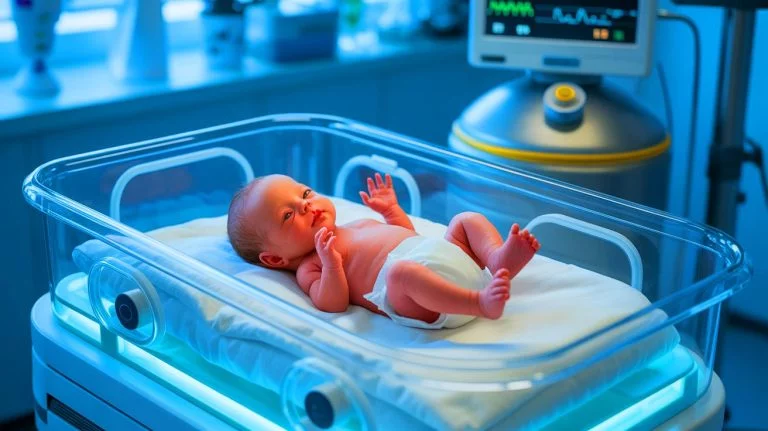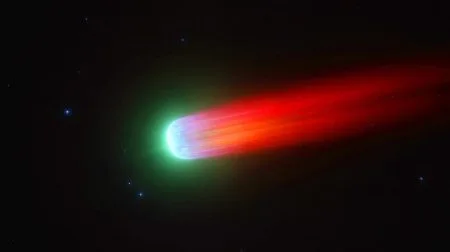| IN A NUTSHELL |
|
In a groundbreaking event that has captured the attention of the medical community and the public alike, a baby boy has been born in the United States from an embryo that was frozen for over three decades. This remarkable occurrence sets a new record for the longest-stored embryo to result in a successful live birth. Thaddeus Daniel Pierce, born on July 26, 2025, to Ohio parents Lindsey and Tim Pierce, is being heralded as the world’s “oldest baby.” The embryo, originally created in 1994, was cryopreserved for 31 years, marking a significant milestone in the field of reproductive medicine.
Embryo Frozen for 31 Years
The journey of this particular embryo began in the early 1990s when Linda Archerd and her husband pursued in vitro fertilization (IVF) to start their family. In 1994, the process resulted in four embryos. One of these embryos was transferred successfully, leading to the birth of their daughter, who is now 30 years old. The remaining embryos were cryogenically preserved and stored for future use.
Over the years, Linda faced increasing annual storage fees, which eventually reached a thousand dollars. As the financial burden grew, she discovered the concept of embryo adoption through the Nightlight Christian Adoptions’ “Snowflakes” program. This innovative program allows donated embryos to be adopted by new families, giving them a chance at life.
Linda was matched with the Pierces, a couple who shared her values and were eager to expand their family. Although Lindsey and Tim Pierce were not attempting to set any records, their primary goal was to have a baby. Despite a challenging birth, both Lindsey and Thaddeus are now doing well. Lindsey expressed her awe and gratitude, stating, “We are in awe that we have this precious baby.”
Major Advancement in IVF
The successful birth of Thaddeus highlights major advancements in IVF technology and practices. Rejoice Fertility, the Tennessee clinic responsible for the embryo transfer, is dedicated to giving every embryo a chance at life, regardless of its age. This commitment is particularly significant as some agencies tend to avoid working with older embryos due to concerns about their viability after thawing.
Previously, the record for the longest-frozen embryo to result in a live birth was held by twins born in 2022 from embryos frozen in 1992. The birth of Thaddeus shatters this record and emphasizes the progress made in reproductive medicine since the first successful IVF birth in 1978.
The advancements in assisted reproductive technology have been monumental, providing hope and possibilities for families worldwide.
https://www.sustainability-times.com/research/we-just-saw-another-world-as-james-webb-captures-first-image-of-nearby-alien-planet-and-triggers-wild-debate-over-life-beyond-earth-and-what-comes-next/
Understanding In Vitro Fertilization
In vitro fertilization is a fertility treatment that involves several steps. Initially, eggs are retrieved from a woman’s ovaries and fertilized by sperm in a controlled laboratory setting. Once fertilized, the resulting embryos can either be transferred into the woman’s womb to achieve pregnancy or cryopreserved for future use. This process offers couples the flexibility to attempt pregnancy at a later time, adapting to their personal and financial circumstances.
The number of IVF births has been on the rise globally, reflecting the growing acceptance and success of this technology. Couples facing infertility challenges now have a viable option to start or expand their families. The birth of Thaddeus Pierce underscores the potential of IVF to overcome biological and temporal barriers, making it a beacon of hope for many.
The Impact of Embryo Adoption
Embryo adoption is an emerging option for families unable to conceive naturally. It involves adopting embryos that have been donated by other families after successful IVF treatments. Programs like Nightlight Christian Adoptions’ “Snowflakes” have facilitated this process, allowing embryos to find new homes and families.
For the Archerds and the Pierces, embryo adoption has been a life-changing experience. It underscores the importance of sharing resources and opportunities, enabling families to experience the joy of parenthood. The success of this practice could inspire more families to consider donating unused embryos, potentially transforming countless lives.
The story of Thaddeus Daniel Pierce is not just a medical marvel but a testament to human innovation and compassion. As reproductive technologies continue to evolve, they pose ethical, medical, and emotional questions that society must address. How will these advancements shape our understanding of family and parenthood in the decades to come?
Did you like it? 4.5/5 (24)







Wow, science never ceases to amaze me! Congrats to the Pierce family! 🍼
Isn’t this kind of playing God? 🤔 Where do we draw the line?
How do they ensure the embryo stays viable for 31 years? That’s incredible!
Why does it feel like we’re living in a sci-fi movie? 😅
Thank you for sharing this amazing story. It’s heartwarming!
I’m all for technology, but this feels too much like a Black Mirror episode!